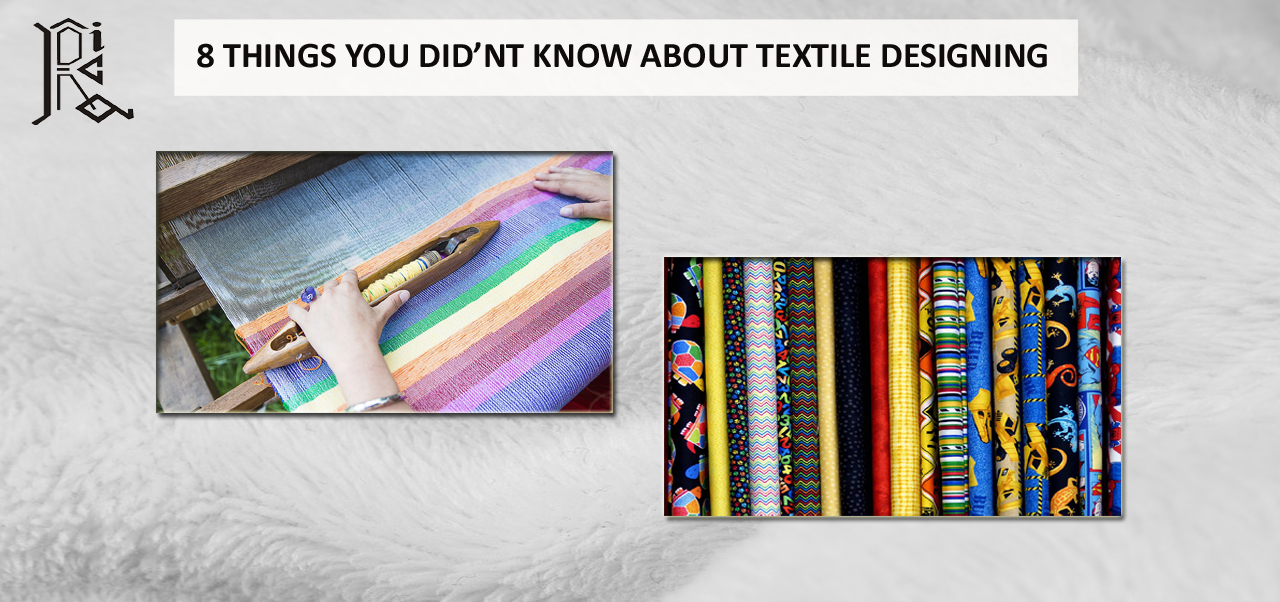
8 Things You Didn’t Know About Textile Designing
8 Things you didn’t know about Textile Designing
Have you always been fascinated with colors, designs and textures? When you look at an outfit, do you find yourself marveling at the color combinations and designs? Then, you would definitely be interested in learning more about the field of textile design. Let’s quickly dive into our topic for today, which is:
1. Textile designing: Textile designing refers to the process of organizing and manufacturing a fabric’s design and structure. Textile designers conceptualize designs that are woven into cloth or printed on fabric. They might also suggest different types of thread to be woven together for a particular look or build patterns that enhance the surface of a fabric. Furthermore, they might identify a dyeing method or suggest the use of dyes to color fibers in order to achieve the desired look.
2. Job duties of a textile designer: Textile designers may work independently or may be part of the designing team. Several designers also choose to run their own freelance business. The primary responsibility of a textile designer is to devise and design a textile or print. However, often designers are engaged in the entire process, right from planning the design to manufacturing the product. Freelance designers would have to manage various aspects of their small business such as marketing, negotiating and shipping their own designs.
3. Eligibility criteria for getting into a textile design program: Most of the full-time degree programs in textile designing require candidates to have completed their 12th standard. Nowadays, several diploma/certificate courses are available for students who have completed their 10th standard.
4. Courses: Students interested in pursuing a career in textile designing could go in for full-time degree courses, diploma courses or certificate courses. Diploma or certificate courses are usually 1, 2 or 3 year skill-based programs. Let us look at some of the degree, diploma and certificate courses offered in textile design:
Bachelor’s Programs in Textile Designing
· B.Des. in Textile Product Design
· B.Design in Fashion and Textile Design
· B.Sc. in Textile Designing
· B.F.A. in Textile Design
· B.Sc. in Textile and Apparel Design
· B.Des. in Textile Design
· B.A. in Textile Designing
Diploma Programs in Textile Designing
· Diploma in Fashion, Textile and Apparel Design
· Diploma in Textile and Fashion Design
· Vocational Diploma in Garment Manufacturing and Quality Control
· Diploma in Textile Design
Certificate Programs in Textile Designing
· Certificate in Textile Design
· Certificate Course in Computer Aided Textile Designing (CCTD-CAD)
5. Indian colleges offering courses in textile design: Here is a list of Indian colleges offering various courses in textile designing:
· Ruchi’s Institute of Creative Arts (RICA), Allahabad
· Amity University, Mumbai
· P.P. Savani University, Surat
· Le Mark Institute of Art, Thane
· Inter National Institute of Fashion Design, Thane
· N. Vogue Academy of Design, Thane
· Kalapurnam Institute, Ahmedabad
· Hamstech Institute of Fashion and Interior Design, Panjagutta
· Poornima University, Jaipur
· M.S. Ramaiah University of Applied Sciences, Bengaluru
· Wisdom School of Management, Lucknow
· Banaras Hindu University
· National Institute of Fashion Technology, Delhi
· Banasthali Vidyapith, Jaipur
· Vogue Institute of Fashion Technology, Bengaluru
6. Working conditions: Some kinds of textile designs might require the use of specialized tools such as sharp-edged pattern cutters or screen-printing materials that require gentle handling and expertise. Usually, a textile designer is usually well versed with the chosen tools and materials before using them in a professional environment. Textile designers may work unusually long hours to meet deadlines.
7. Career prospects: Textile designers could work in collaboration with fashion designers, designing fabrics as per the fashion designer’s requirements. As a textile designer, you could also work in a large department store chain, creating unique textiles for its national stores. Alternatively, you could work for a number of manufacturing companies that utilize textiles, namely furniture and home goods companies.
8. Alternative careers: After completing their coursework in textile designing, students may also pursue careers in related fields such as industrial designing or graphic designing.
